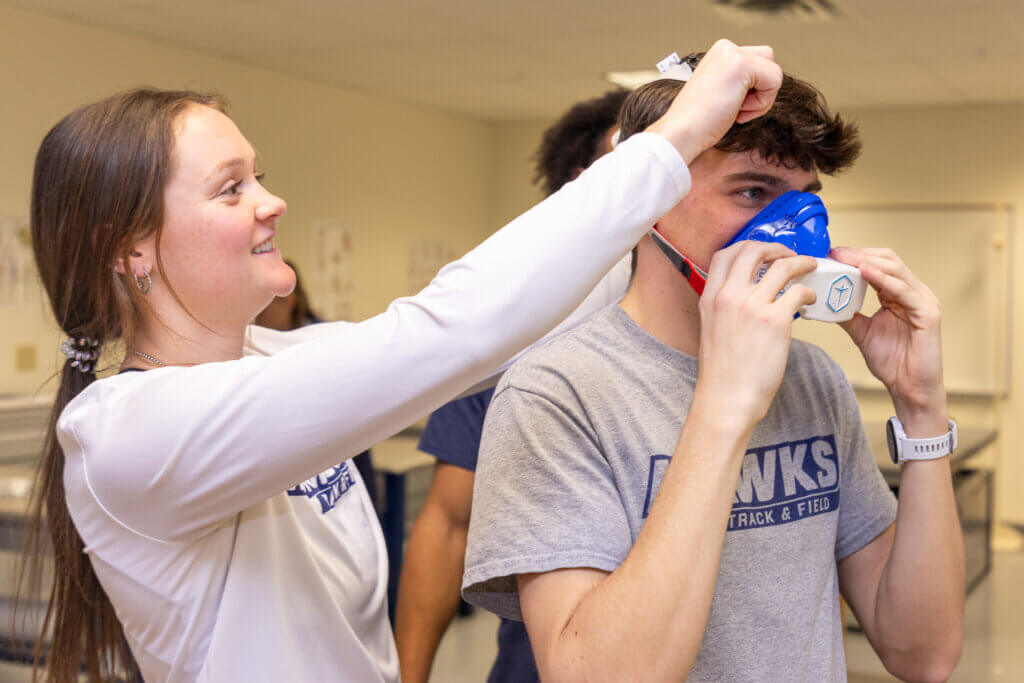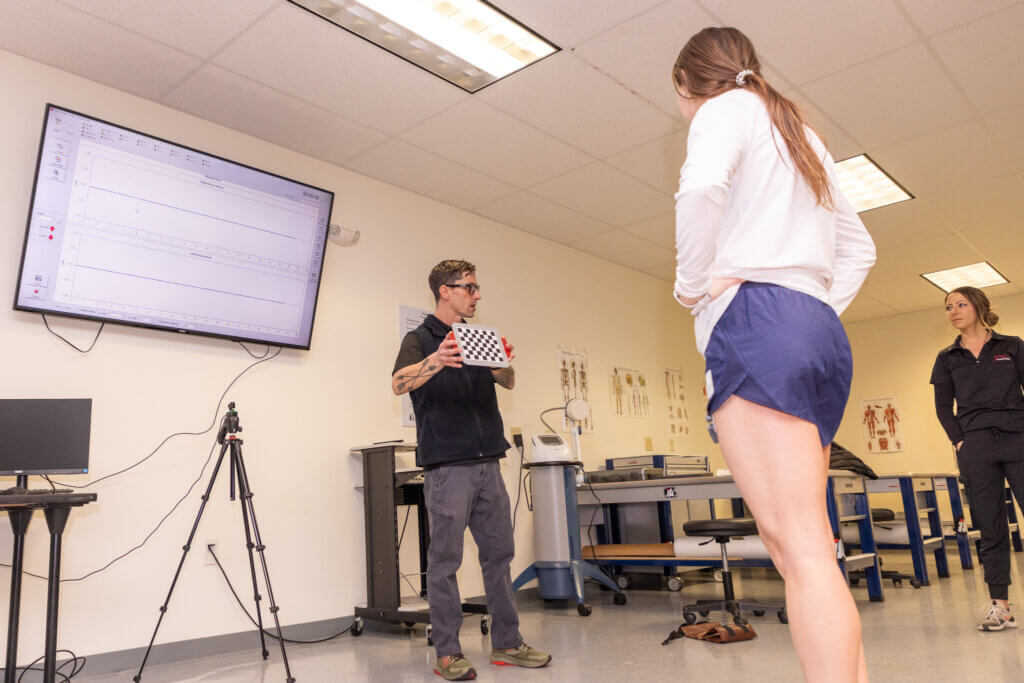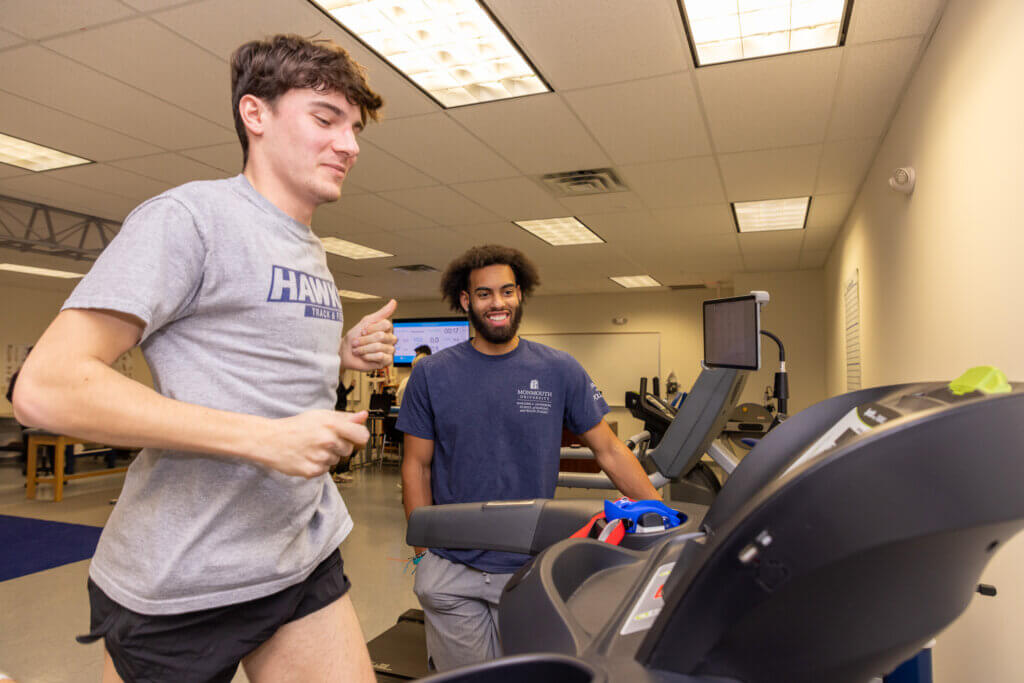The Human Performance Lab (HPL) is housed within the Department of Health and Physical Education. The HPL, located in the Monmouth University Graduate Center (Room 222), aims to become a center of distinction at Monmouth University by providing applied learning experiences in movement science courses, fostering faculty and student research in human performance, and advancing health initiatives through community partnerships. It is .
Our Equipment
The HPL features state-of-the-art technology for advanced performance analysis. Its equipment includes Podium ground force plates, wireless eight-channel EMGs for measuring muscle response to electrical activity, a VO2 Master for metabolic testing, and isokinetic dynamometry for measuring joint torque. The lab also utilizes accelerometry technology to measure movement dynamics, a Monark stationary bicycle for Wingate and performance testing, a Theraband Wall Station, Baiobit wireless motion analysis testing, and tools for anthropometric and body composition.


VO2max
VO2max testing is performed on a treadmill or cycle ergometer and provides a tool for training, racing, and overall fitness. It measures cardiovascular fitness directly with our metabolic cart (VO2max), including threshold and training zone determination.
Force Plates
Force plate testing is useful for athletes competing in bounding events, such as vertical and horizontal jumps, as well as for force-velocity profile, asymmetry testing, and repeated jumps.
Our Coursework
Students gain hands-on experience in the lab through movement science courses, such as PE-215 Fitness Measurement, PE-320 Exercise Physiology, PE-330 Biomechanics and Kinesiology, and PE-410 Exercise Testing and Prescription.

Exercise and Human Performance Testing
HPL staff provide specialized expertise in biomechanical analysis, clinical exercise prescription, musculoskeletal evaluation, and body composition assessment. The lab offers various exercise tests and fitness evaluations for both students and the public, providing up-to-date evaluations and recommendations. These evaluations include examination of cardiovascular risk, biomechanical and motion analysis, fitness and training status, and guidance on how to improve and implement fitness and sport-specific training.


Students seeking a major in exercise science can become proficient in performing standard exercise tests. Using our treadmill and metabolic analyzer, we can test for peak anaerobic power. Students can also analyze body composition through skin fold caliper analysis and body composition scales and test for motion analysis using the integration of Baiobit, force plate, and EMG analysis. We also provide full body assessments of joint range of motion.
Collaborations & Services
Through the HPL, Monmouth University students:
- Develop movement science knowledge and competencies through lab-based coursework and specialized internships.
- Collaborate with professionals within the Monmouth University community, peer institutions in the U.S. and abroad, corporate sectors, and secondary school systems.
- Engage in research initiatives driven by faculty and student in lab settings.
Our Team
- The HPL is maintained by the coordinator, Tamara Rial-Faigenbaum, Ph.D.
- Lab-based instruction is facilitated by Tamara Rial-Faigenbaum, Ph.D., and Jamie Pigman, Ph.D.
- Logistical support for lab-based activities is provided by a graduate research assistant.
